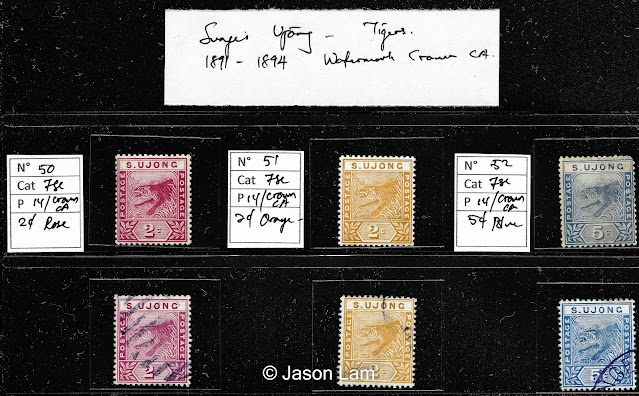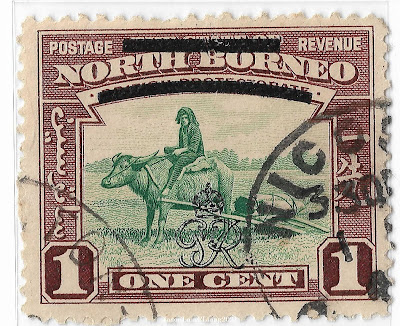White Forehead on Malaya BMA 2c and 6c

Apart from the shade varieties of the 2c (orange and orange yellow) and 6c (slate-grey and slate), another interesting variety of these two stamps is white forehead. It is believed that the white forehead is due to plate wear, which is consistent to overall look on the stamps where all with such varieties are stamps from worn plates (speckled, cracking, and inconsistent inking) when compared to the normal ones. CW32a, White forehead variety CW32, Normal 2c Used CW32a CW35, Normal 6c CW35b, White forehead Used CW35b Cropped and zoomed-in for comparison. The stamp on the right also shows some extent of ink fading out, a consequence of a worn plate. Notice that the right stamp has a wider white forehead. I wonder if does get any wider than that. Take a quick look at your stamps, now! Hopefully this will spark more interest in collecting Malaya BMA stamps. Thank you for dropping by!





